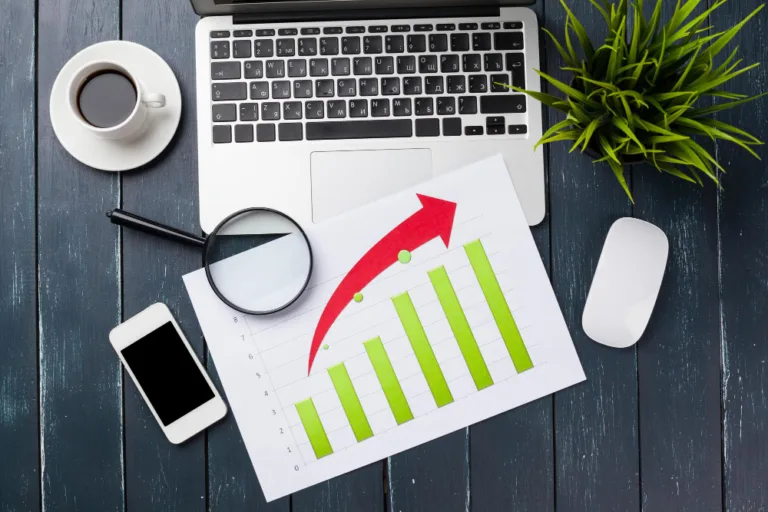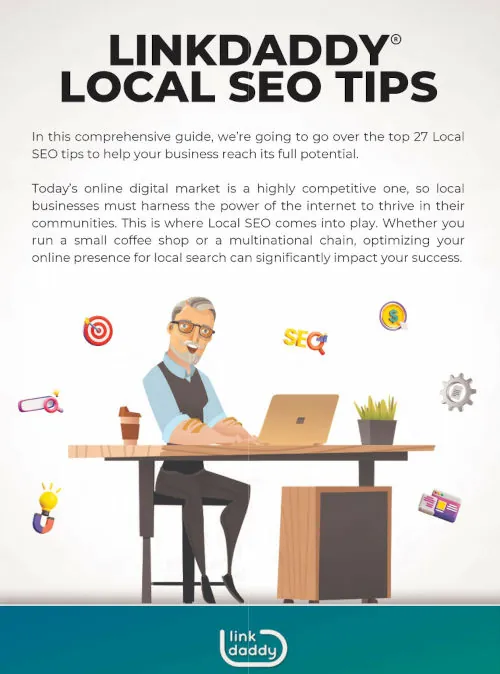
Search engine optimization (SEO) has emerged as a powerful tool to achieve this, enabling websites to rank higher in search engine results and attract more organic traffic. However, the realm of SEO is multifaceted, and understanding the nuances of different techniques is vital for maximizing its benefits.
Off-page SEO and on-page SEO are two integral facets of optimization, each playing a distinct role in improving website performance. While both strategies contribute to enhancing visibility and increasing traffic, they operate in different realms.
On-page SEO refers to the practices implemented directly on the website itself. This includes optimizing website content, meta tags, headers, and URLs, among others. By optimizing these elements, websites can become more user-friendly and search engine-friendly, resulting in higher search rankings and improved organic traffic. On-page SEO focuses on improving the website’s relevancy and credibility by offering high-quality content and adhering to best practices.
On the other hand, off-page SEO refers to the techniques employed outside the confines of the website to boost its visibility and reputation. This includes building high-quality backlinks, engaging in social media marketing, and utilizing online directories. Off-page SEO aims to establish the website’s credibility and authority by demonstrating its relevance to search engines. By acquiring backlinks from reputable websites and creating a strong presence on social media platforms, websites can improve their search rankings and increase exposure.
We will dissect the crucial distinctions between off-page SEO and on-page SEO, offering insights into how each technique functions and the impact it can have on your website’s success. By understanding these differences, you can tailor your SEO strategy effectively and unlock the true potential of your online presence. So, let’s unravel the essence of SEO and embark on a journey towards digital success.
The Basics of On-Page SEO
One of the most important parts of search engine optimization for your website is on-page SEO. It involves optimizing various elements on your web pages to improve their visibility and ranking on search engine result pages (SERPs). Here are some key components of on-page SEO that you need to focus on:
1. Optimizing Content: High-quality, relevant, and engaging content is the foundation of your website’s success. Make sure to use keywords naturally within your content, but avoid keyword stuffing, as it can negatively impact your rankings. Also, focus on readability by using headings, subheadings, bullet points, and short paragraphs.
2. Meta Tags: Meta tags provide information about your web page to search engines and users. Make sure to optimize your title tags, description tags, and header tags with relevant keywords to entice users to click on your website in the SERPs.
3. URL Structure: Your website’s URL structure should be clean, concise, and keyword-rich. Avoid using long, complex URLs that make it difficult for users and search engines to understand the content of your web pages.
4. Heading Tags: Properly using heading tags (H1, H2, etc.) helps search engines understand the structure and hierarchy of your content. Include relevant keywords in your headings to improve your on-page SEO.
5. Optimizing Images: Images can enhance the visual appeal of your website, but they can also affect your site’s loading speed. Optimize your images by compressing their size and using descriptive filenames and ALT tags that include relevant keywords.
By implementing these on-page SEO strategies, you can significantly improve your website’s visibility, user experience, and organic search traffic. Remember to regularly analyze your website’s performance, keep your content fresh and up-to-date, and adapt to the ever-changing SEO landscape. By doing so, you will be able to stay ahead of the competition and rank higher in search engine results.
Demystifying Off-Page SEO

Off-page SEO is a critical aspect of improving your website’s visibility and ranking on search engine result pages (SERPs). While on-page SEO tactics help optimize various elements on your website, off-page SEO focuses on promoting your website through external factors.
One of the most popular off-page SEO practices is link building. Links are like digital referrals from other websites, and search engines consider them a vote of confidence for your website’s credibility and authority. These links can be obtained through various methods, such as reaching out to other website owners for collaboration opportunities, guest posting on relevant blogs, or creating valuable content that naturally attracts backlinks. Your website is likely to rank better in search results the more relevant and high-quality backlinks it has.
Another way to enhance your off-page SEO is through social media engagement. Social media platforms provide an effective avenue for promoting your website’s content, attracting more visitors, and increasing your brand’s visibility. By sharing valuable content regularly, engaging with your followers, and building a strong social media presence, you can drive more organic traffic to your website.
Guest posting is another off-page SEO strategy that involves writing content for other websites in your niche. By guest posting on reputable websites, you can establish yourself as an expert in your field, gain exposure to a new audience, and generate relevant backlinks to your website. This can significantly improve your website’s visibility and authority in the eyes of search engines.
Influencer collaborations can also be an effective off-page SEO tactic. Collaborating with influencers in your industry allows you to tap into their existing audience and increase your brand exposure. By partnering with influencers who align with your website’s niche, you can drive more targeted traffic to your website and improve search engine rankings.
The Interplay Between On-Page and Off-Page Techniques
On-page and off-page SEO techniques are two sides of the same coin when it comes to optimizing your website. While they work independently, they also have a powerful influence on each other. When used in harmony, they can dramatically improve your website’s visibility and rankings in search engine results.
On-page optimization refers to the actions you take directly on your website to improve its SEO. This includes optimizing your website’s content, meta tags, headings, URLs, and internal and external links. By implementing the right keywords and providing high-quality, relevant content, you can attract the attention of search engine crawlers and improve your website’s visibility.
Off-page optimization, on the other hand, involves actions taken outside of your website to improve its SEO. This covers influencer outreach, guest blogging, social media marketing, and link development. Off-page SEO techniques help build your website’s credibility and authority, as search engines perceive high-quality backlinks and social signals as a sign of trustworthiness.
So, how do these two techniques work together?
- On-page optimization acts as a foundation for off-page efforts. When your website is well-optimized, it becomes more attractive to other websites looking to link back to high-quality content. When your content is valuable, people are more likely to share it on social media, further boosting your website’s visibility and link building potential.
- Off-page optimization enhances the impact of on-page efforts. When other authoritative websites link back to your content, search engines view it as a vote of confidence and are more likely to prioritize your website in search results. High-quality backlinks also drive traffic to your website, increasing its exposure and potential conversions.
- The success of your SEO strategy lies in finding the perfect balance between on-page and off-page techniques. By optimizing your website’s content and structure while also actively building high-quality backlinks and social signals, you can create a comprehensive and successful optimization strategy. So, make sure to give equal importance to both on-page and off-page SEO techniques to maximize your website’s potential for success.
Monitoring and Measuring Success with On-Page and Off-Page SEO

Monitoring and measuring the success of your SEO efforts is an essential step in ensuring that your website is performing at its best. By tracking key metrics, you can identify areas for improvement and make necessary changes to your on-page and off-page SEO strategies. Here are six analytics tools and metrics that you should be using to monitor your progress:
1. Website Traffic: Start by monitoring your website traffic to get an overall sense of how well your SEO efforts are working. Tools like Google Analytics can provide detailed insight into the number of visitors, their behavior, and the source of their traffic (organic, referral, social media, etc.). By analyzing this data, you can gauge the effectiveness of your keywords, content, and other on-page SEO elements.
2. Conversions: Measuring conversions is crucial for determining how successful your website is in achieving its goals, such as generating sales or capturing leads. Set up conversion tracking in Google Analytics to understand which keywords, landing pages, or campaigns are driving the most valuable actions. This information will help you optimize your on-page SEO strategy to increase conversions.
3. Backlinks: Off-page SEO is just as important as on-page optimization. Monitoring your backlinks can help you understand the quality and relevance of the sites linking to you. Tools like Ahrefs or Moz can provide valuable insights into your backlink profile. Analyze this data to identify opportunities for acquiring high-quality backlinks and improving your off-page SEO efforts.
4. Social Media Engagement: Social media platforms play a significant role in driving traffic to your website. Tracking your social media engagement metrics, such as likes, shares, comments, and click-through rates, will help you understand how effectively you are engaging your target audience. To track and evaluate your social media performance, use applications like Sprout Social or Hootsuite.
5. Organic Search Ranking: Keeping an eye on your organic search rankings is critical. Tools like SEMrush or Moz can provide you with data on your current keyword rankings and how they have changed over time. By tracking these metrics, you can identify keywords that are performing well and optimize your on-page SEO accordingly.
6. Bounce Rate: Monitoring your bounce rate is essential for understanding how engaged your visitors are with your website. A high bounce rate indicates that visitors are leaving your site quickly, which could be a sign of a poor user experience or irrelevant content. Use Google Analytics to track your bounce rate and make adjustments to your on-page SEO strategy to improve user engagement.
Evolving Trends in On-Page and Off-Page SEO
1. Rise of Voice Search: With the increasing popularity of smart speakers and voice assistant technology like Siri and Alexa, voice search has become a game-changer in SEO. People are now using voice commands to search for information online, which has led to a shift in search behavior. To optimize for voice search, it is essential to focus on long-tail, conversational keywords and provide concise, direct answers to commonly asked questions.
2. Mobile Optimization: As more and more people access the internet through their mobile devices, search engines give priority to websites that are mobile-friendly. Mobile optimization involves creating responsive web designs, ensuring fast page load times, and optimizing content for smaller screens. Investing in mobile optimization is crucial to maintaining a high search engine ranking and providing a seamless user experience.
3. Social Signals and Search Rankings: The influence of social media on search rankings is becoming more apparent. Search engines consider social signals, such as likes, shares, and comments, as indicators of a website’s credibility and relevance. To leverage social signals for SEO, businesses need to actively engage with their audience on social media, encourage content sharing, and cultivate a positive brand reputation. Integrating social media into your overall SEO strategy can help boost your search rankings and drive organic traffic.
4. User Experience: Websites with an excellent user experience are given priority by search engines. Factors such as page load speed, easy navigation, and high-quality content play a crucial role in improving the user experience. To enhance your website’s user experience, optimize page load times, provide clear navigation paths, and create engaging, informative content that meets the needs of your target audience,.
5. Structured Data: Implementing structured data markup helps search engines better understand the content on your website, leading to enhanced visibility in search results. By using schema markup, you can provide search engines with additional information about your site’s content, such as reviews, ratings, and product availability. This extra layer of data can significantly improve your website’s click-through rates and organic traffic.
Summary

On-page SEO forms the foundation of your website’s optimization, focusing on optimizing the content, structure, and HTML elements within it. It involves optimizing keywords, meta tags, headers, and URL structures to provide search engines and users with relevant and valuable information. A well-executed on-page SEO strategy not only ensures better rankings but also enhances the user experience, leading to increased engagement and conversions.
In contrast, off-page SEO revolves around increasing your website’s authority and popularity through external signals. This involves building high-quality backlinks from reputable websites, creating engaging and shareable content, and establishing a strong presence on social media platforms. Off-page SEO serves as a vote of confidence for search engines, indicating that your website is trustworthy, valuable, and relevant to users’ interests.
Both on-page and off-page SEO are crucial elements of a successful optimization strategy. By combining these techniques, you can leverage the strengths of each to achieve maximum results. While on-page SEO lays the groundwork for visibility and relevancy, off-page SEO enhances credibility and authority.
It is important to note that SEO is not a one-time effort but a continuous process. As search engine algorithms evolve and user behavior changes, your optimization strategy should adapt to these changes. Regularly monitoring and optimizing your on-page and off-page SEO efforts will help you maintain a competitive edge and ensure your website continues to rank well in search engine results.
A holistic approach that integrates both on-page and off-page SEO techniques is essential for driving organic traffic, boosting conversions, and establishing your website as a reliable and authoritative source of information. By investing time and resources into these optimization strategies, you can pave the way for long-term success and growth in the online landscape.
Frequently Asked Questions
On-page SEO and off-page SEO are both important for a well-rounded SEO strategy. On-page SEO focuses on optimizing your website’s content and structure, while off-page SEO involves acquiring quality backlinks and social signals. Both contribute to improving search engine rankings and should be given equal consideration.
Building quality backlinks in off-page SEO requires a combination of strategies. Some effective approaches include guest blogging on reputable websites, creating and promoting valuable content that naturally attracts backlinks, reaching out to industry influencers for collaborations or partnerships, and leveraging social media platforms for sharing and link building.
The frequency of revisiting and updating on-page and off-page SEO depends on various factors. On-page SEO should be regularly reviewed and updated whenever there are changes to your website’s content, structure, or overall strategy. Off-page SEO should be consistently monitored and adjusted as needed to maintain a strong backlink profile and adapt to changes in search engine algorithms. Generally, a quarterly or biannual audit and optimization process is recommended for both on-page and off-page SEO.









